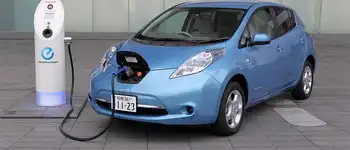IBM, Harvard want your PC for solar power study
NEW YORK, NEW YORK - Scientists at Harvard University and IBM are hoping to harness the power of a million idle computers to develop a new, cheaper form of solar power that could revolutionize the green energy world.
Researchers have launched the project using IBM's World Community Grid, which taps into volunteers' computers across the globe to run calculations on a myriad of compounds — potentially shortening a project that could take 22 years to just two years.
Harvard scientists are hoping the project will allow it to discover a combination of organic materials that can be used to manufacture plastic solar cells that are cheaper and more flexible than the silicon-based ones typically used to turn sunlight into electricity.
The technology could be used to coat windows, make backpacks or line blankets to produce electricity from the sun's rays.
Technology to make the plastic cells already exists, but they are not yet efficient enough to be rolled out in commercial products.
"It is not now cost efficient, although the materials are cheap because it's plastic," said Alan Aspuru-Guzik, a chemistry researcher at Harvard University.
The most efficient silicon-based photovoltaic solar cells convert about 20 percent of the sunlight that strikes them into electricity. For now, the organic cells can turn only about 5 percent of the sunlight into power -- half the level needed to make the low-cost cells a viable energy source.
The researchers plan to publish results of the work once they have discovered a possible combination of compounds.
IBM developed its World Community Grid to advance research of humanitarian projects, such as fighting cancer, dengue fever and AIDS. The grid connects computers in homes or offices via the Internet with program on each machine to run calculations that feed back to the database.
"It's a way for people that have computers to do some good for the world," said IBM engineer Joe Jasinski.
With more than a million volunteers currently linked to the World Community Grid, IBM said it had created a network with a massive calculating capability that would rank it among the top 10 most powerful supercomputers in the world.
Members of the grid download software to their personal computers that run the calculations as a screensaver program on the machine when it is turned on but not in use.
IBM includes security software to protect the participants' computers.
Such virtual networks are also in place to crunch data for other projects, such as SETI's effort to sift through radio telescope signals for signs of extraterrestrial life in the universe.
Related News

Ontario Businesses To See Full Impact of 2021 Electricity Rate Reductions
TORONTO - As of January 1, 2022, industrial and commercial electricity customers will benefit from the full savings introduced through the Ontario government’s Comprehensive Electricity Plan, announced in Budget 2020, and first implemented in January 2021. This year customers could see an additional four percent savings compared to their bills last year, bringing the full savings from the Comprehensive Electricity Plan to between 15 and 17 per cent, making Ontario a more competitive place to do business.
“Our Comprehensive Electricity Plan has helped reverse the trend of skyrocketing electricity prices that drove jobs out of Ontario,” said Todd Smith, Minister of…




